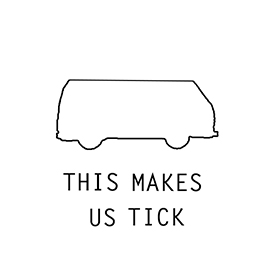When we brought Daisy home we did in the knowledge that she needed some work. We knew there would be new seals, rubbers, gaskets and canvas galore, however like with any old vehicle you need to expect the unexpected.
.jpg)
I have a bit of a history with Vw’s, I have owned 3 beetles each with their own personality and problems;
A 74 1303 which I bought as my first car for £900 circa 2001/2002
.jpg)
Some years later came a 67 1500 which later became a 1600 turbo
.jpg)
And finally around 2008 a 61, man this thing was gorgeous and went like stink with a 1955cc stroker engine!
.jpg)
.jpg)
Daisy mechanically is very similar to the bugs I owned but comes with her own charms when it comes to bodywork. We plan to take her far and wide so the work we do on her needs to be first rate is she is to remain reliable when we are far from home.
This is the first post of us documenting the repairs and upgrades we are doing to make her strong and keep her running perfect for hopefully many years to come.
Getting her home
The trip bringing her home was about 150 miles so we went prepared with tools (a spanner and socket set as well as screwdrivers) , spare oil, fuel pipe, condensor, points and rotor arm, throttle and clutch cables, fuses as well as ensuring there was already a spare and jack and a fire extinguisher. We had noticed the fuel gauge wasn’t working when we first saw her so we got a jerry can en route and top her up with fuel just in case.
Reverse was a pig to select, the carb was running rich, the handbrake kept on sticking (i quickly learnt to use a foot on the handbrake lever to un jam it whilst driving) and the horn was in a place impossible to find… But man we looked cool!
.jpg)
We only broke down once, first i thought we had run out of fuel but after checking the engine bay I found that the plastic fuel filter was fitted after the fuel pump which means it was pretty much useless and was full of air not fuel. So I removed it and put in a new fuel line between the fuel pump and the carb somewhere near oxford off the A40 and we made it home 😉
Checking her out
I wanted to check Daisy over more closely so not long after we got her back and in her new home I did the following :
New, Oil, filter, plugs and valve adjustment.
Removed and sold the 32/36 empi carb, having had previous experience with these carbs they always run rich and are a pig to tune. I replaced with a standard refurbed 34 pict 3 solex and manifold which ran like shit. So bit the bullet and got a new empi solex. This ran fine but i will get an original back on or a twin carb setup at some point as the empis dont have fantastic build quality.
Removed the headlight eyelids because I can’t stand them other than the original high quality chrome ones on 60’s bugs. They also have a nasty habit of putting pressure on the glass causing cracks. As i removed them one of the lenses felt apart so I had to replace. At the same time as doing this I replaced both headlight seals, rubbers and screws and setup the height of the beams properly for MOT time.
.jpg)
After replacing the 009 distributor for a SVDA vacuum advance one and renewing all ignition leads, I set the valves cold, warmed the engine tuned the carb and did the timing with a strobe. The valves were way out so we suspected they hadn’t been done for some time. We ran like this for a few weeks keeping a close eye on the engine for leaks and performance.
After a few runs I knew their was an oil leak and was not happy with the performance. These vehicles are not fast by any means but it would struggle to keep 30mph up small hills. I did a compression test and found that one cylinder was really down and the rest were not great.
So engine out time!.jpg)
The oil leak was simply because the engine was not running a stock airfilter and therefore the breather pipe dripped oil over No2 barrel .The bracket to hold the filter and the filter itself were long since removed and a cheap pancake filter put in its place. I replaced this with a scat performance filter for standard solex carbs.
I removed the engine, something I have done many times before, 4 bolts, the rear engine support bar, throttle cable detach and fuel line detach. On vehicles of this year with non removable valance the gearbox is not fixed to the chassis, the engine supports it and then the support bar supports the engine. So the gearbox needed to be strapped up in place.
Having suspected an issue with one of the cylinders it was time to strip off the tin and ancillaries and remove the heads with the help of my dad. He taught me everything there was worth knowing about cars and having the right attitude and when the right level of swearing = walk away for 5 mins.
The heads revealed cracks and upon removing the barrel on the suspected cylinder we found a broken piston ring. DOH!
.jpg)
Despite the problems found the engine showed no signs of leaking oil from the main crankshaft seal or pulley seal. The clutch was also clean, and the endfloat was spot on so we decided there was no reason to suspect further issues. We bought a new 1600 head and piston kit with Mahle pistons and Autolinea heads. I built up the various rings and got the pistons inside the barrels with a ring compressor and tightened down the heads.
Whilst the engine was out I took the opportunity to remove the fuel tank to have a look at the broken sender. It was connected OK, so I needed to ascertain whether the issue was the gauge or the sender unit. I tested it by pulling the wire off the sender. The gauge should at this point go to empty, mine did. Then I took the sender wire and ground it to the chassis. The gauge should go to full, mine did. This means that the gauge is good and the issues are with the sender. An awesome guide for all things aircooled and electronic can be found here speedyjim.net/.
So whilst I was waiting for a new sender I took a real good look at the tank, it was rusty as hell inside!! Not leaking but 43 years of rust and muck. I restored the tank on my 67 bug previously using a kit from Frost.co.uk it makes the inside brand new! It consists of Marine Clean, Prep and Ready and Petrol Tank Sealer. The random picture above is a cheap hairdryer drying the tank before final sealant. I tested a new sender to ensure it was working before fitting it to the tank and putting the tank back in.I cleaned out the breather pipes on the tank and re-fitted.
The clutch was an odd 215mm size which was upgraded from 200mm in 1976, 3 years after daisy was made. The flywheel was in good condition so rather than bust my balls removing the flywheel gland nut (254 ft-lbs of fun). I put a new 215mm friction plate, pressure plate and release bearing in. Once the engine was back in I fitted a new clutch and throttle cable as well as a new fuel pump. The pump had been setup to run with no filter and the internals were leaky so I replaced temporarily for a non rebuild-able type. I instantly had a problem as although Daisy had been converted to run a alternator as opposed to dynamo the fuel pump was still a dynamo version with a 108mm pushrod. The altenator fuel pump I fitted is designed for a 100mm pushrod = no fuel and a bent rod.
.jpg) Once I obtained the correct length rod she started straight up. Although the throttle cable was snagged and wasn’t allowing full movement. It was a few days before our wedding so had no choice but to run as is. She made it with a top speed of 30 mph to be the maid of honor and center piece, we spent our first ever night in her on the night of our wedding! We are not gona lie it was awesome!
Once I obtained the correct length rod she started straight up. Although the throttle cable was snagged and wasn’t allowing full movement. It was a few days before our wedding so had no choice but to run as is. She made it with a top speed of 30 mph to be the maid of honor and center piece, we spent our first ever night in her on the night of our wedding! We are not gona lie it was awesome!
.jpg)



Great to see how she came to life! So many more adventures to come for you all 🙂